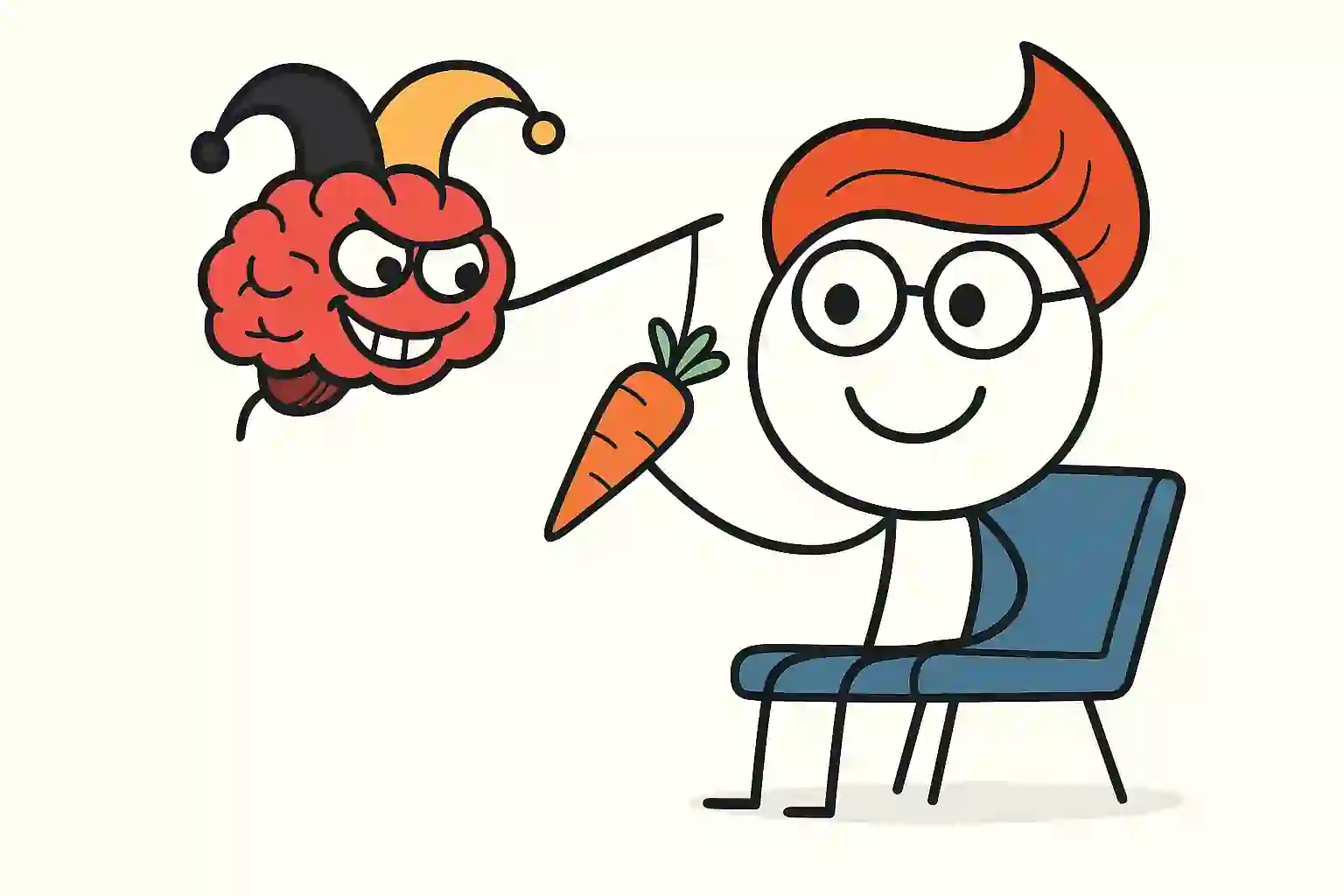How Your Own Mind Fools You

By Sachin Malik
The market is not your biggest enemy.
Your own mind is.
It’s not the market that beats you. It’s you who beats yourself.
Your own mind plays tricks on you.
It whispers lies. It shows patterns where there are none. It celebrates wins and ignores mistakes.
It tricks you into believing you’re right—even when you’re wrong.
You think you’re in control. But you’re not.
Unless you learn how your mind fools you, you’ll keep falling into the same traps. You’ll keep losing money.
In this article, I’ll show you how your brain plays games with you—
and how to break free.
Because winning in the market starts with mastering your mind.
Pattern Bias
Your brain is a pattern-recognition machine. It looks for patterns—even when there are none.
That’s why you see animals in the clouds. Faces in the stones. Shapes in the stars.
Thousands of years ago, this helped us survive. Our ancestors had to hunt to eat. They had to notice patterns.
A broken twig, a footprint in the mud—was it a harmless deer or a deadly lion? One wrong guess, and they were dead.
So our brain evolved. It became sharp at spotting patterns.
Even today, it keeps doing the same thing.
But here’s the problem.
In the stock market, this skill can backfire.
You open a chart, and your brain wants to see a pattern. Head and shoulders, cup and handle, flags and triangles. It all looks real. It feels real. But many times, it’s just an illusion.
You think you’ve found a winning pattern. But you’re being fooled by your own mind.
This is called pattern bias. And if you don’t understand it, it can cost you money.
That’s why HERO strategy doesn’t rely only on charts.
It starts with hard numbers.
Price = EPS × P/E Ratio.
Once you have found a company with strong fundamentals, then you look at charts.
Don’t rely only on chart patterns. Bring numbers into your strategy.
Don’t let your mind trick you.
Outcome Bias
Imagine this: You spot a beautiful chart pattern. It looks perfect—just the kind of setup that could make you money.
Excited, you decide to dig deeper. You open the company’s conference call, scan through the reports, and try to estimate its future earnings.
But there’s nothing concrete. No solid reason to believe earnings will grow. No strong fundamentals backing your decision.
A little voice in your head warns you: “I don’t really know what’s going to happen with this company’s earnings.”
But then, another voice whispers: “The chart looks good. I should give it a shot.”
And so, you take the trade.
By sheer luck, it works out. The stock moves in your favour, and you walk away with a profit. A smile creeps onto your face. “I made the right decision,” you tell yourself. “After all, I made money.”
But here’s the truth: Your mind has fooled you.
You’ve fallen for outcome bias—the dangerous illusion that a decision was good just because it led to a profitable result. You judged the quality of your decision by the outcome alone.
But a profitable trade is not always a good trade.
There are four types of trades. Every trade you take falls into one of these four categories:
- Good Trade
- Bad Trade
- Profitable Trade
- Losing Trade
A good trade can be profitable or losing. A bad trade can be profitable or losing.
Confused? Let’s break it down.
The Hidden Trap of a Bad Trade That Wins:
Imagine a strategy with a 50%-win rate and a 0.5:1 reward-to-risk ratio.
You bet ₹1000 on a trade.
- If you win, you make ₹500.
- If you lose, you lose ₹1000.
This time, you win. You pocket ₹500. You feel good. “That was a profitable trade!”
But it was a bad trade.
Why? Because in the long run, this system is a disaster.
If you take 100 trades:
- 50 will win → You make ₹25,000 (50 × ₹500)
- 50 will lose → You lose ₹50,000 (50 × ₹1000)
Net result? You lose ₹25,000 in the long run.
You thought you made a smart choice, but in reality, you followed a losing system. You got lucky this time, but luck won’t save you forever.
What Makes a Trade Truly ‘Good’?
A good trade is a trade taken from a system with positive expectancy—one that makes money over a large number of trades.
For example, a strategy with a 50%-win rate and a 2:1 reward-to-risk ratio:
- You bet ₹1000 per trade.
- When you win, you make ₹2000.
- When you lose, you lose ₹1000.
Over 100 trades:
- 50 wins → You make ₹1,00,000 (50 × ₹2000)
- 50 losses → You lose ₹50,000 (50 × ₹1000)
Net result? You make ₹50,000.
This is a system that wins in the long run.
Don’t Let Outcome Bias Trick You:
If you take a trade from a negative expectancy system and win, you got lucky—but it was a bad trade.
If you take a trade from a positive expectancy system and lose, it was unlucky—but still a good trade.
Never judge a decision by its outcome alone. Look at the process also.
How your mind fools you is by making you believe that a single winning trade means you made the right choice. It doesn’t.
Understand the difference between a good trade and a profitable trade. Don’t be fooled by outcome bias. Your long-term success depends on it.
Keep Learning
Next Lesson: Understanding Your Emotional Problems